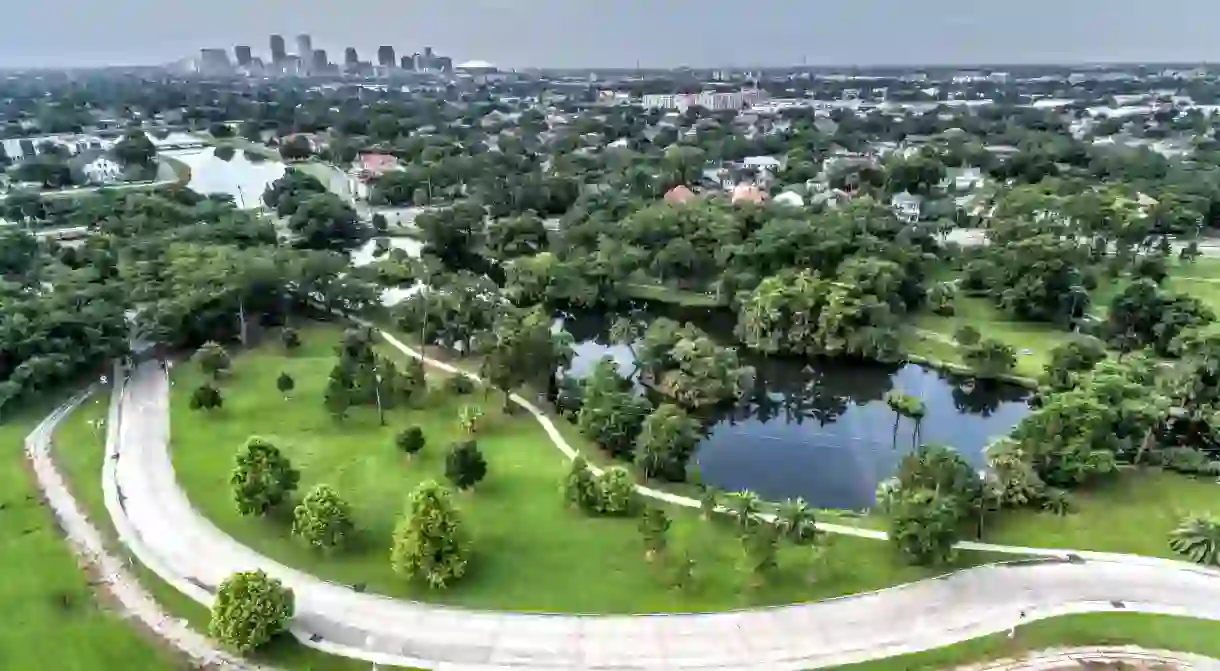What to See in New Orleans’ City Park

More than just a green space, New Orleans’ City Park has a week’s worth of activities within its boundaries – explore this expansive park’s art museum, botanical garden, golf course, dog park, antique carousel and more with our ultimate guide.
New Orleans’ City Park, larger than New York’s Central Park, is a must-visit. This outdoor oasis not only fosters the world’s largest mature live oaks collection (some more than 900 years old) but is also home to an antique carousel, stables, a farm, an art museum, an amusement park, a minigolf course, a dog park, two stadiums, soccer fields, a botanical garden, a sculpture garden, tennis courts and nature trails. Discover everything you can do, see and eat inside NOLA’s green giant in Culture Trip’s guide to City Park.
About City Park
City Park – originally the Allard Plantation, a dairy farm where slaves also grew sugarcane, cotton, indigo, rice and corn crops – was once land owned by brothers Robert and Louis Allard until 1845. After defaulting on their mortgage, the Allard brothers had their property seized and it was sold to businessman John McDonogh, who allowed Louis to live there until his death. McDonogh, who passed away five years after his purchase, left the land jointly to his native city, Baltimore, and his adopted city, New Orleans. His will stipulated that the 654 acres should be reserved for recreational purposes only. (Baltimore gave up its undivided half to New Orleans in payment of taxes.)
Even though City Park has been rebuilt and restored many times since its mid-19th-century establishment, there are two major events that shaped the park’s life history: the Great Depression and Hurricane Katrina.
As part of the Works Project Administration (1935-43), a New Deal work program designed to provide useful work for victims of the economic depression, the Roosevelt administration employed more than 20,000 men and women to plant 100,000 trees. The government invested $12 million to develop the parkland, build roadways, fountains, gardens, a golf course and the Tad Gormley Stadium. WPA architecture in City Park today includes: the Peristyle, the Hyams Fountain, the McFadden Girl Scout Cabina, the New Orleans Botanical Garden and nine bridges.
At the other side of City Park’s course-shaping history is Hurricane Katrina. After one of the five deadliest natural disasters in US history made its historic Category 5 landfall in New Orleans, 95% of the mid-city public space sat under floodwater, inflicting $43 million in damages to the park alone. About 2,000 trees in the 1,300-acre space were lost as a result of the storm; however, the public rallied around the park, and more than 60,000 volunteers planted 6,500 new trees and rebuilt and revitalized the park with even more facilities than it had to begin with.
Today, City Park stands among the largest (approximately 50% bigger than New York City’s Central Park) and most-visited urban public parks in the nation.
New Orleans Museum of Art
Museum

Carousel Gardens Amusement Park
Amusement Park
Open seasonally, on weekends, from February 29-May 24, the Carousel Gardens Amusement Park features 18 old-fashioned rides. There’s the Ladybug Roller Coaster, Tilt-A-Whirl, bumper cars and a Ferris wheel, but the main attraction is the ‘Flying Horses’ antique carousel. Built in 1906, the hand-carved merry-go-round is one of only 100 left in the country, and the last remaining in the state.
New Orleans Botanical Garden
Botanical Garden

Funded by the WPA, the City Park Rose Garden, as it was called when it opened in 1936, has been expanded over the years to fit 12 acres of land featuring more than 2,000 varieties of plants from all over the world. In the early 1980s, the space was renamed the New Orleans Botanical Garden, but what has remained are the 10 sculptures commissioned by Mexican-American relief artist Enrique Alférez.
City Putt
Park
City Putt is a complex broken up into two 18-hole minigolf courses. The Louisiana Course takes a more broad overview of the state, focusing on cultural themes and cities, while the New Orleans Course takes a closer look at the historic sites from around the iconic city.
Bayou Oaks Golf Complex
Park
Similar to City Putt, Bayou Oaks consists of two 18-hole golf courses, albeit at a larger scale. When it opened in 1902, the complex featured nine holes and was known as City Park Golf Courses. Over the years, North, East, South and West courses were built. Today, only the North and South remain, with the South serving as a championship-level course.
This article is an updated version of a story created by Rebeca Trejo.













